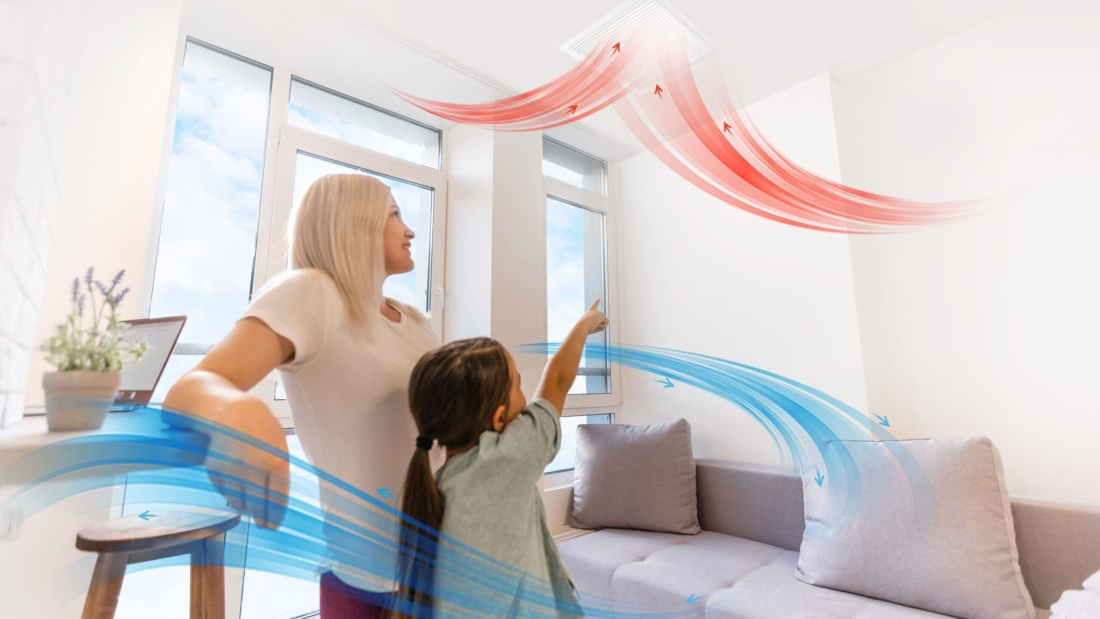Table of contents
- What is a Sampling Strategy?
- Indoor Air Sampling: Why it Matters
- General Principles of Indoor Air Sampling in ISO 16000
- Step-by-Step Approach to Developing a Sampling Strategy
- Types of Indoor Air Pollutants Covered by ISO 16000
- Sampling Locations: Choosing the Right Spots
- Sampling Methods for Indoor Air Quality
- Sampling Duration and Frequency: ISO 16000 Guidelines
- Equipment and Tools for Indoor Air Sampling
- Conclusion
- Contact EIQM
What is a Sampling Strategy?
A sampling strategy is a detailed plan outlining how, when, and where to sample air in indoor environments to obtain accurate data on pollutants. In the context of ISO 16000, a sampling strategy serves the purpose of identifying specific air quality issues, monitoring pollutants over time, and ensuring compliance with health and safety regulations.
A well-designed strategy allows for effective monitoring, ensuring that the air being sampled is representative of the indoor environment and any variations in pollutants over time.
Indoor Air Sampling: Why it Matters
Indoor air quality has a profound effect on human health. Poor IAQ can lead to respiratory diseases, allergies, and long-term chronic conditions. Indoor environments often harbor pollutants such as Volatile Organic Compounds (VOCs), particulate matter (PM), and biological contaminants like molds and bacteria. By adopting a robust sampling strategy under ISO 16000, building managers and homeowners can identify potential risks before they impact occupants’ health.
General Principles of Indoor Air Sampling in ISO 16000
ISO 16000 emphasizes several key principles when it comes to indoor air sampling. These include:
- Representativeness: Samples should accurately reflect the air quality conditions experienced by occupants.
- Consistency: Sampling methods must be standardized and repeatable.
- Precision and Accuracy: Equipment and methodology must provide reliable data.
The standard provides detailed guidance to ensure that sampling techniques yield data that is both representative and relevant.
Step-by-Step Approach to Developing a Sampling Strategy
To create a successful sampling strategy following ISO 16000 guidelines, several steps are essential:
- Identify Objectives: Define the purpose of the sampling—whether it’s to detect specific pollutants, assess compliance, or monitor changes over time.
- Determine Pollutants: Decide on the pollutants of interest, which could range from VOCs to mold spores.
- Identify Locations: Choose where to sample, typically high-traffic areas or spaces near potential pollution sources.
- Sampling Duration & Frequency: Determine how long and how often the air will be sampled.
Each of these elements must be carefully considered to ensure the data collected is actionable.
Types of Indoor Air Pollutants Covered by ISO 16000
ISO 16000 covers a broad range of indoor air pollutants, including:
- Volatile Organic Compounds (VOCs): Emitted from products like paints, solvents, and adhesives.
- Particulate Matter (PM): Tiny particles from combustion sources like stoves or tobacco smoke.
- Biological Contaminants: Mold, bacteria, and dust mites.
- Gaseous Pollutants: Carbon dioxide (CO2), carbon monoxide (CO), and ozone.
Each pollutant requires specific methods and considerations for proper sampling.
Sampling Locations: Choosing the Right Spots
Choosing appropriate sampling locations is crucial. ISO 16000 suggests prioritizing areas where people spend the most time or where ventilation is poor, such as offices, bedrooms, or kitchens. Areas near pollution sources, such as photocopiers or garages, should also be considered.
Sampling Methods for Indoor Air Quality
Indoor air can be sampled using different methods:
- Active Sampling: Involves using pumps to draw air through collection devices. This method is often used for VOCs and PM.
- Passive Sampling: Uses diffusion techniques, relying on the natural movement of air. Passive sampling is less intrusive and can be used for gases like nitrogen dioxide.
The choice between active and passive methods depends on the pollutants and the sensitivity required.
Sampling Duration and Frequency: ISO 16000 Guidelines
Sampling duration and frequency can vary depending on the objectives:
- Short-Term Sampling: Used for immediate or acute concerns, such as in response to a specific event (e.g., chemical spill).
- Long-Term Sampling: Provides a broader understanding of air quality over time. This is useful for monitoring trends or compliance with IAQ regulations.
ISO 16000 provides guidance on the recommended sampling periods for different types of pollutants.
Equipment and Tools for Indoor Air Sampling
The accuracy of indoor air sampling largely depends on the equipment used. Common tools include:
- Air Pumps: For active sampling.
- Sensors and Detectors: For real-time monitoring.
- Adsorbent Tubes and Filters: To collect samples for later laboratory analysis.
Proper maintenance and calibration of these tools are essential to avoid sampling errors.
Conclusion
ISO 16000 provides a robust framework for understanding and managing indoor air quality through strategic air sampling. By focusing on pollutants, location, duration, and methodology, you can ensure that the air inside any building is safe and healthy for its occupants.
A well-implemented sampling strategy helps in maintaining compliance with health standards and improving overall well-being.

